Why Vinyl? Because The Music Deserves It (Op-Ed)
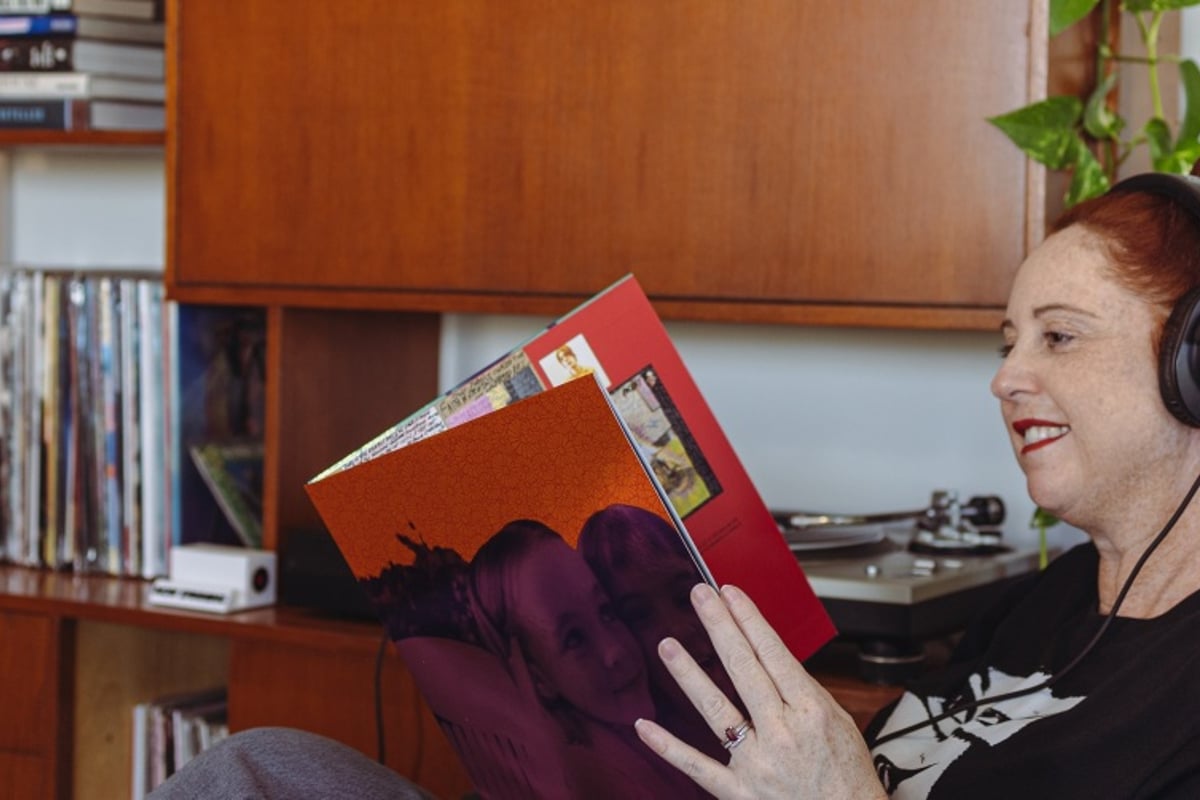
There are five core reasons that music enthusiasts continue to embrace vinyl, underscoring the trend that has seen record sales climb impressively over the past decade.
I still have my first-ever vinyl record. “Sesame Disco” by the cast of Sesame Street. Shout out to track 2, “Me Lost Me Cookie At The Disco” by Cookie Monster. Absolute banger. Around the same time, I got my second album, Cabbage Patch Dreams by Cabbage Patch Kids. It would have been the early ‘80s, when I was just a toddler.
They’re a little worse for wear because I didn’t know how to look after them when I was a kid, but I have distinct memories of being taught to handle them with care. They spent most of their lives in a crate in my Mum’s garage while I galavanted all over the world. It wasn’t until 2014 when I moved back to Sydney from London that I unpacked the crate, and added that old stash to the records I’d bought since and sent home in a shipping container with the rest of my belongings from the U.K.
They are not worth much from a monetary perspective, maybe a few bucks. But they are not for sale and never will be, because they absolutely sent me on a life-long trajectory of caring deeply about music.
I can also thank my parents for that. I distinctly remember growing up there were “Dad’s Records” (AC/DC, The Beatles, Alice Cooper, Black Sabbath, The Angels) and “Mum’s Records” (Dusty Springfield, Janis Joplin, Patti LaBelle, Bob Marley), and I wasn’t allowed to touch them unsupervised – already instilling in me that these precious items were important and had value.
It wasn’t until adulthood that I truly understood why.
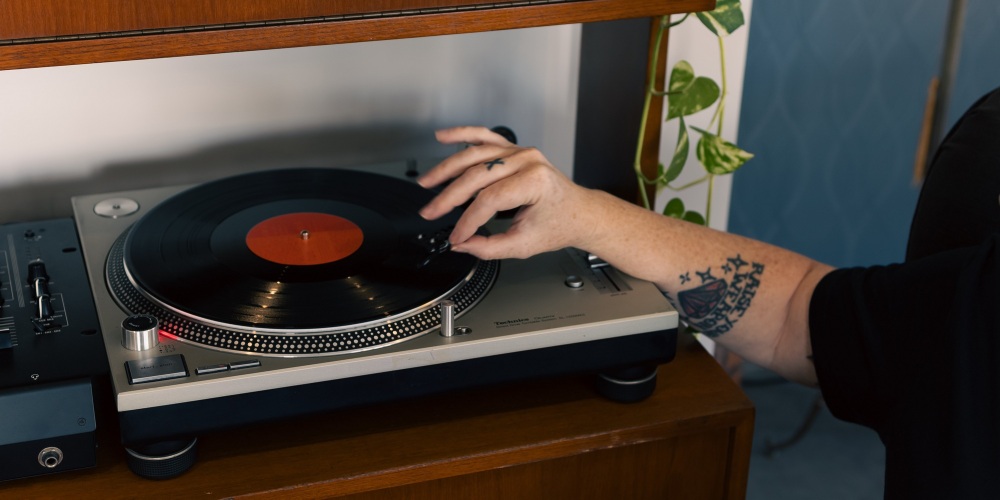
Photo credit: Thomas Simpson
As an avid vinyl collector and having worked in the music industry for almost 20 years – most recently as the CMO of Vinyl Group and launching Vinyl.com a year ago – I’ve been privileged to be privy to data on both the decline and the phenomenal resurgence of vinyl sales.
According to ARIA, sales of vinyl albums in 2023 saw a significant increase, rising 14.1% to reach $42.1 million. In 2023, vinyl accounted for 70% of the total physical sales revenue in Australia, and 42% of the physical sales volume. This boost from vinyl led to a 2.9% increase in the combined revenue from all physical products which is remarkable considering that, at the same time, CDs declined by 16% and DVDs by 33%.
Globally, the trend continues.
The RIAA reported that 43 million albums were sold on vinyl in the U.S. in 2023, reflecting a 17-year running growth pattern, outselling CDs for only the second time since 1987. In the U.K., the analysis of Official Charts data by the BPI showed an 11.7% growth with a rise to 5.9 million records sold.
In recent years, the resurgence of vinyl records has become more than a nostalgic wave; it’s evolved into a significant cultural and economic phenomenon. As we delve deeper into 2024, there are five core reasons why music enthusiasts continue to embrace vinyl, underscoring the trend that has seen record sales climb impressively over the past decade.
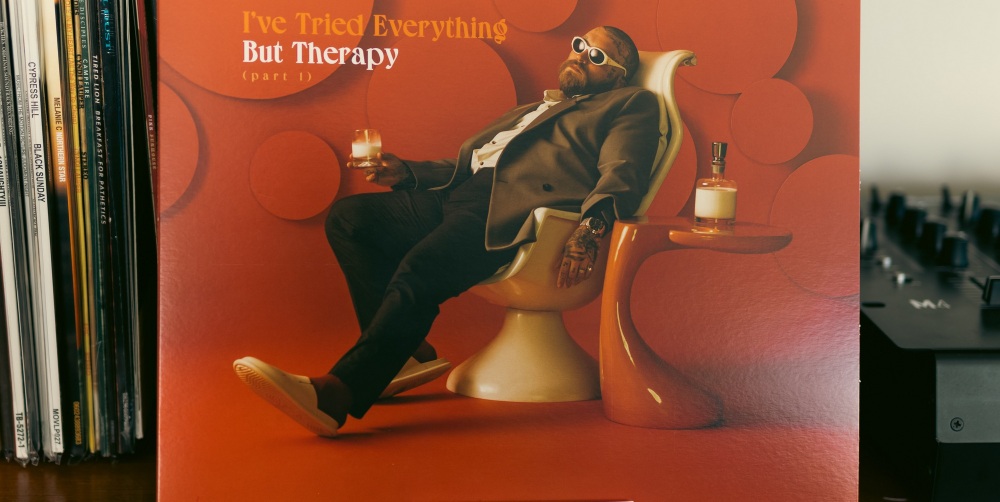
It just sounds good
Aficionados of vinyl records are passionate about the distinctive sound quality and the immersive experience it offers. Unlike the ephemeral nature of digital music, playing a record is a ritual — it’s tactile and engaging. The act of removing a record from its sleeve, placing it on a turntable, and carefully dropping the needle creates a hands-on connection to the music that digital formats simply cannot replicate.
The rich, warm sound produced by vinyl, often described as more authentic or “alive” than digital recordings, is because vinyl captures the fullness and depth of sound with greater fidelity.
“Listening to vinyl is about connection with something you love; intangibly that could be the music that plays, or even the artist, speaking to you on a wider level. The vinyl allows a physical manifestation of that art that can be treasured, cherished, bumped, bruised and scraped, even ignored over the years.
That tells your story too – where it was bought, who you were with, and maybe what partner, parent or child you were with at the time. It adds up to something meaningful; to telling the story of our own lives that are more than a sum of our parts. And it allows us to savour those stories, really listen to the art. And it allows us, as we as homo sapiens have always done, to ritualistically pass on those stories to other generations to enjoy should they choose to do so.”
– Luke Bevans, founder of Impressed Recordings
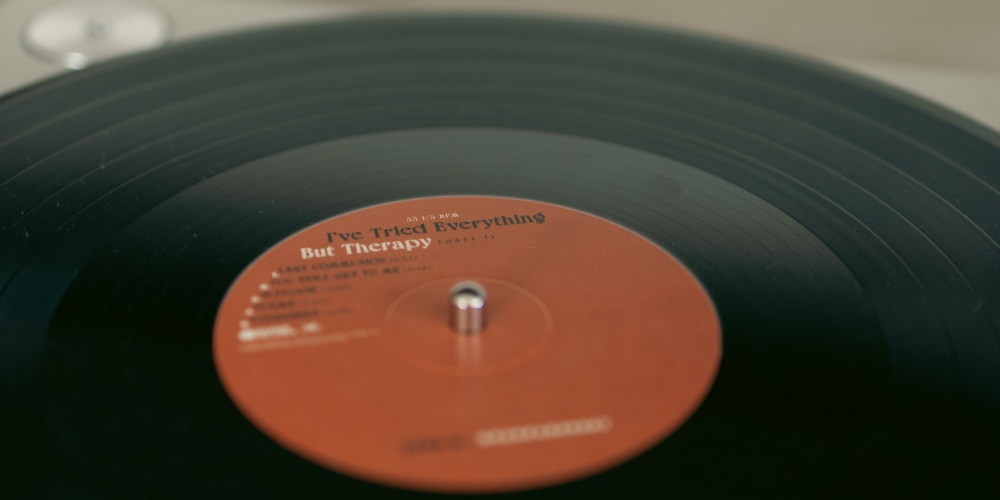
Photo credit: Thomas Simpson
It supports artists financially
Purchasing vinyl is seen as a more direct and financially beneficial way to support artists. In an era where most artists cannot earn an adequate income with streaming alone, buying a record provides a more substantial and immediate contribution to an artist’s livelihood.
For fans, this method of support feels more personal and impactful, aligning with a desire to ensure that their favourite musicians can continue to create and thrive. This financial aspect is not just about buying music; it’s about funding artistry and supporting the broader music ecosystem.
“Initially growth was driven by nostalgia and a large volume of catalogue re-issues by established acts, however increasingly vinyl is becoming a standard release format for most artists. This has brought a new generation of fans to the format, and this is driving growth,and also bringing new fans into the market.”
– Kathy Wilson, owner of Suitcase Records pressing plant in Brisbane
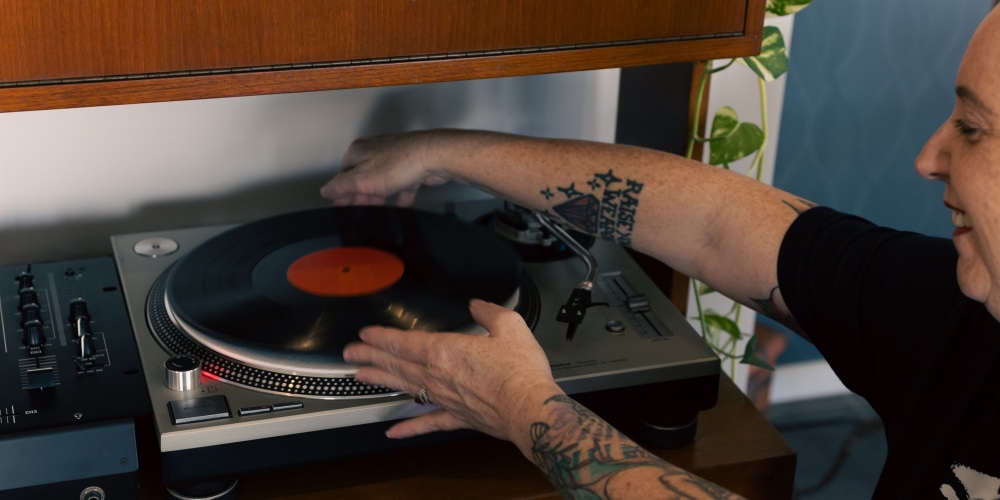
Alli Galloway (photo credit: Thomas Simpson)
Investment
Vinyl records have emerged as a lucrative investment. Collectors and investors alike recognise that certain records, especially limited editions and original pressings, often increase in value over time. This aspect of vinyl collecting can be likened to investing in art; each record potentially appreciating in value depending on its rarity, condition, and the artist’s ongoing relevance or legacy.
For some, buying records is a forward-thinking financial strategy, anticipating future gains from today’s purchases.
Rare and autographed vinyl records have fetched astronomical prices at auction, with some albums selling for hundreds of thousands of dollars.
Martin Shkreli bought the sole copy of Wu-Tang Clan’s album Once Upon a Time in Shaolin for $2 million, making it the most valuable vinyl ever. Imprisoned for financial crimes, he cannot profit from it for 100 years, but can release it for free.
Ringo Starr’s first print of The Beatles’ White Album sold for $790,000. Jack White purchased a test pressing of Elvis Presley’s first recording for $300,000. A 1967 pressing of The Beatles’ Sgt. Pepper’s album, signed by all four members, was bought for $290,000, and a copy of John Lennon & Yoko Ono’s Double Fantasy, signed by Lennon hours before his death, sold for $150,000.
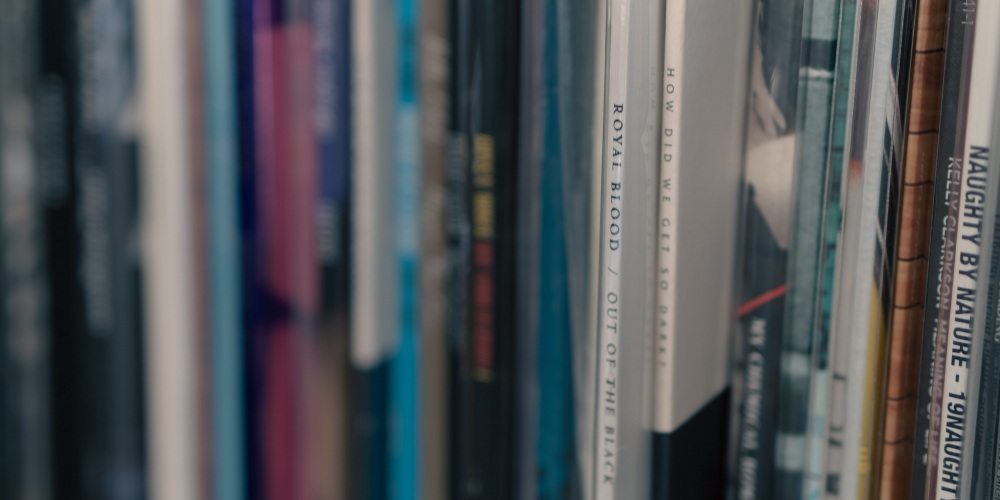
Photo credit: Thomas Simpson
People like to collect
Vinyl holds immense appeal as collectibles and pieces of memorabilia. This trend transcends mere music listening; it’s about owning a piece of history or a physical manifestation of personal identity. Album covers, liner notes and the records themselves are often considered works of art, worthy of display and discussion.
Collecting records becomes a deeply personal endeavour, as each addition to a collection helps to tell a story or commemorate a moment in time. This aspect of vinyl collecting taps into the human desire to collect and curate objects of significance, making each record a cherished possession to display on a wall, often unopened and unplayed. The desire to own it is no different to collecting sports or film memorabilia.
“Vinyl’s resurgence is about fandom. Fans are looking for something connective, immersive and collectible that’s a deeper experience in the artist’s world – and they’re not getting it from streaming. Vinyl’s resurgence signals that we haven’t found a real digital parallel for it in any way – meaning it still has plenty of room for growth, but the door is wide open for new formats.”
– Rob Abelow, founder of Where Music’s Going
Artists are now making conscious choices to press vinyl in ways that truly appeal to all kinds of fans; whether that be exclusive and limited amounts of pressings, colour variants, splatter and marble editions, or using recycled vinyl to appeal to those who have concerns over the environmental impact.
Major global superstars like Coldplay and Billie Eilish are amongst those leading the charge when it comes to speaking up about it. Locally, Brisbane’s only pressing plant, Suitcase Records, is offering regrind pressings – the scraps of waste vinyl that would usually end up in the bin are now being used to create stunning colourful pressings that are in demand. Aussie bands like Parkway Drive and King Gizzard and the Lizard Wizard have been distributing recycled vinyl for years. Green Music Australia recently announced the launch of an industry alliance for eco-friendly vinyl solutions.
So, whilst the format remains decades-old, the process of manufacture is changing to become more relevant.
Nostalgia
Arguably the biggest reason for vinyl sales, particularly on Vinyl.com, is still good ol’ nostalgia.
In Vinyl.com’s 50 best-sellers list of albums released in 2023, a whopping 32% were re-issues of albums released prior to 2023. Further, 28% of the top 50 were specifically anniversary re-presses including 10th anniversary re-presses from Tame Impala, Passion Pit, The Weeknd, The 1975 and Daft Punk. 20th anniversary reissues from Athlete, The Postal Service, The Flaming Lips, Linkin Park, Death Cab for Cutie, The White Stripes and Goo Goo Dolls. And finally, a 30th anniversary edition of Green Day’s Dookie.
This bit is personal, but highly relatable. As a Millennial myself, I don’t buy a lot of new release records, probably 1 in 5. The other 4 are the classics that give me that nostalgia hit, or that make me feel connected to the person I was and the life I lived when those songs first penetrated my soul.
I tend to buy more brand-new anniversary releases than scouring for second-hand original pressings, but when I do happen to stumble across a first press ‘90s classic in a crate at the markets, I get a pretty major thrill and I’ll buy it for $50-plus, even if the condition isn’t mint.
Why? It makes me feel good. The artwork, the track list, the inner sleeves and credits, lyrics, fold out posters – it just takes me back to a time and place, or reminds me of an experience or a person, and that has value in itself.
So why is that important to me even though at least 70% of my listening behaviour is streaming unlimited songs for $11.99 a month?
I feel music deeply. Songs that mean the most to me can spin me anywhere between elation and depression, the full spectrum of feelings and emotions. I have empathy for the artist and what drove them to write the song, to spill their guts, to share their skill and talent. That means something quite personal to me. I have immense gratitude for that.
Picking up my phone, opening an app, searching for a title and hitting play feels cheap to me. Like, I’m not giving enough back in those three seconds to warrant what the music means to me. Sure I still enjoy it, but it’s diminished, and I’ll carry on doing other tasks while the music becomes secondary.
Give me a revered title on vinyl and I’ll dedicate an hour of uninterrupted focus on scouring the artwork, opening the gatefold, carefully placing the record on the turntable, gently dropping the needle – the crackle sends a wave of frisson through my body – and then the music just hits me differently. It’s deeper, I’m more connected, I want to give back to it. It’s meditation, ritual, a sacrifice of my time not spent on something else. Because the music deserves it.
I’ve spent decent coin on good quality speakers and styluses, and set it all up so the aesthetic is pleasing, not just for me, but for anyone who comes to my house. I’ve got a comfy chair and a set of good quality headphones for the occasions when it’s not appropriate for my neighbours to hear what I’m listening to. I purposely upgraded the size of my shelving unit to cater for the records I own and the ones that will join in future. I’ve gone to substantial effort for my vinyl. Because the music deserves it.
The sustained growth in vinyl sales is not merely a reflection of consumers turning back the clock. Rather, it represents a conscious choice by music lovers who appreciate the richer sound quality, value the opportunity to support artists more directly, see potential financial gains and cherish the collectible nature of vinyl.
When we listen to vinyl, we are unplugged and are not exposing ourselves to data collection that places us into an algorithm. It’s personal and private, and we all deserve that one-on-one connection to music – just another reason that vinyl continues to hold a unique and revered place in the hearts of music enthusiasts worldwide, and will do so for many years to come.
Alli Galloway is chief marketing officer of Vinyl Group.






























